Garden News | December
Deck the gardens with boughs of holly, the festive season is upon us and winter is officially here.
However, as we enter the final month of 2023 that doesn’t mean that the garden at Leonardslee has any less to offer our visitors or that there isn’t plenty for me and the rest of the garden team to be getting on with right now.
It’s been such a wet autumn again this year, so we’re hoping that we get a proper frosty winter with much less rain. The mild, soggy autumn has meant that we’ve not been able to cut back and ‘put to bed’ some of our beds and borders ready for mulching yet. Although this has the welcome extension of any late flowering plants such as Salvia and Dhalia for example, the garden will need some proper cold weather to put everything into dormancy and to knock back any pests and diseases that might otherwise linger. The autumnal rain washed some of our paths away on several occasions this year and even overloaded the lakes so that they broke their banks too. The garden team here are certainly looking forward to a new season!
Jack Frost could well be nipping at our noses, fingers and toes of course, but the frosty winter wonderland that this creates is truly a sight to behold here in our Grade I listed historic gardens. Ice-crusted seed heads on the herbaceous plants we’ve left standing in our more formal areas for example, and frozen berries, such as the holly trees behind the Rock Garden and Skimmia shrubs on the way to Bluebell Bank, are a true joy of December. As well as holly, see if you can spot any ivy and mistletoe around the garden when you’re next here! We certainly have other festive plants on display, such the Christmas Rose (or Hellebore) which you’ll spot dotted through the areas near the house, and Christmas Box (also known as Sarcococca). This is one of my favourite plants at this time of year. Covered in sweetly scented flowers, you’ll find a number of varieties in and around the Rock Garden, in the house borders and also further afield as you explore the Loderi Garden for instance. It also makes a great cut stem to bring into the house if you have any at home. I’ve often wondered whether it would make a good hedging plant, what with it being evergreen and with the added bonus of the scented blooms, so who knows, watch this space…
While you’re exploring the garden, make sure you get down to the lakes in the bottom of the valley this December as they reflect the skeletal deciduous trees and evergreen conifers that surround them. Did you know, that if you wanted to keep warm this month and walked round the perimeter of all of the lakes here at Leonardslee, it would take over 3700 steps and would burn nearly 250 calories?! That’s the equivalent of a large slice of Christmas cake or a couple of small mince pies! I think I might have to do a couple of laps myself!
Talking of keeping moving when it’s cold at this time of year, if you haven’t ventured up to the Pinetum in the Deer Park before, now is a perfect opportunity. A Pinetum is a collection of any type of conifer, be it pine, fir or cedar for example. Conifers look great throughout the whole year, particularly when covered in cones, but in December they really stand out and offer an added interest that other trees that have lost their leaves do not. The original Pinetum at Leonardslee was planted by Sir Edmund Loder in the early 1900’s up near the Top Garden to the north of the estate, but most of this was unfortunately lost in the 1987 great storm.
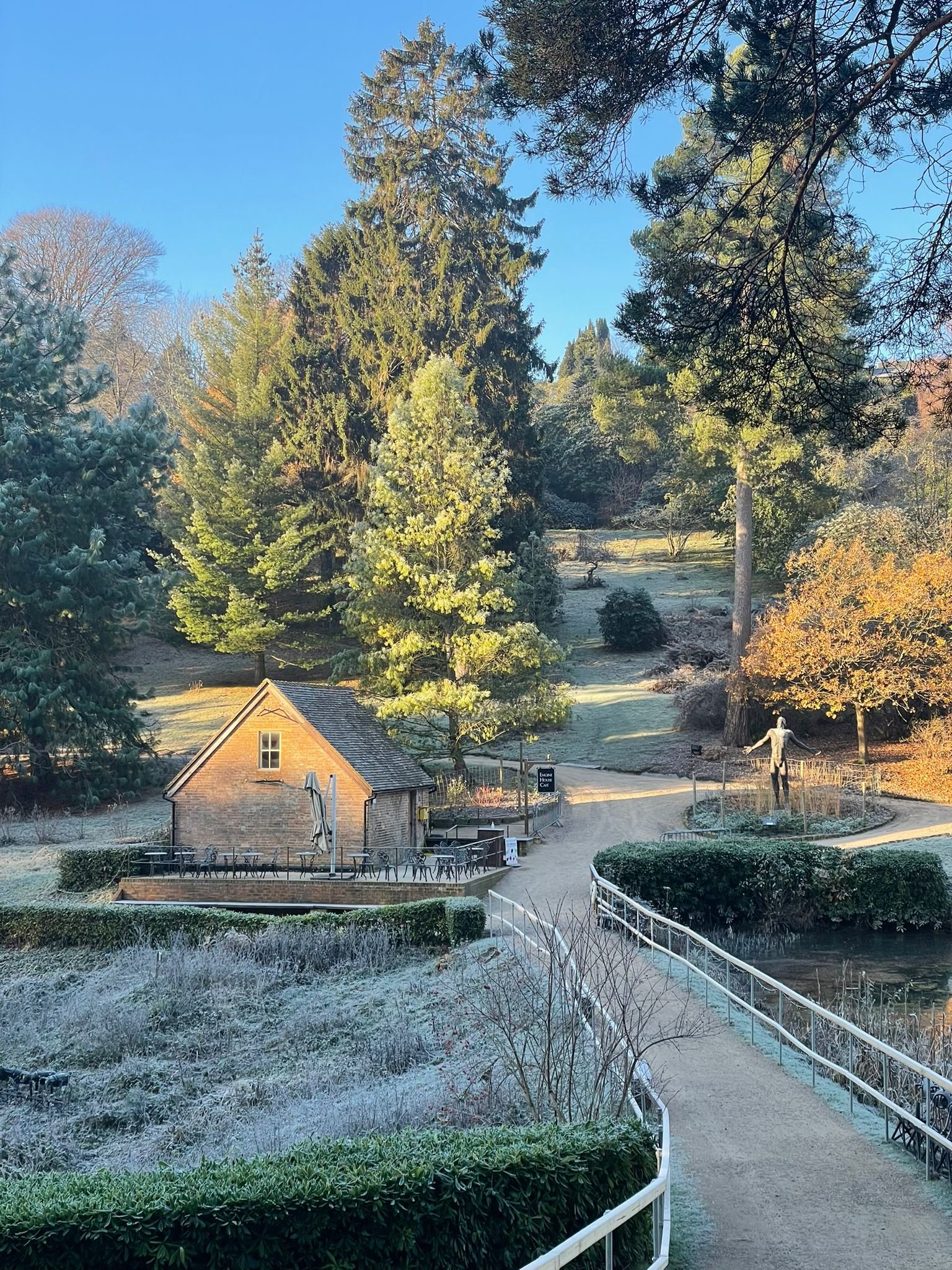
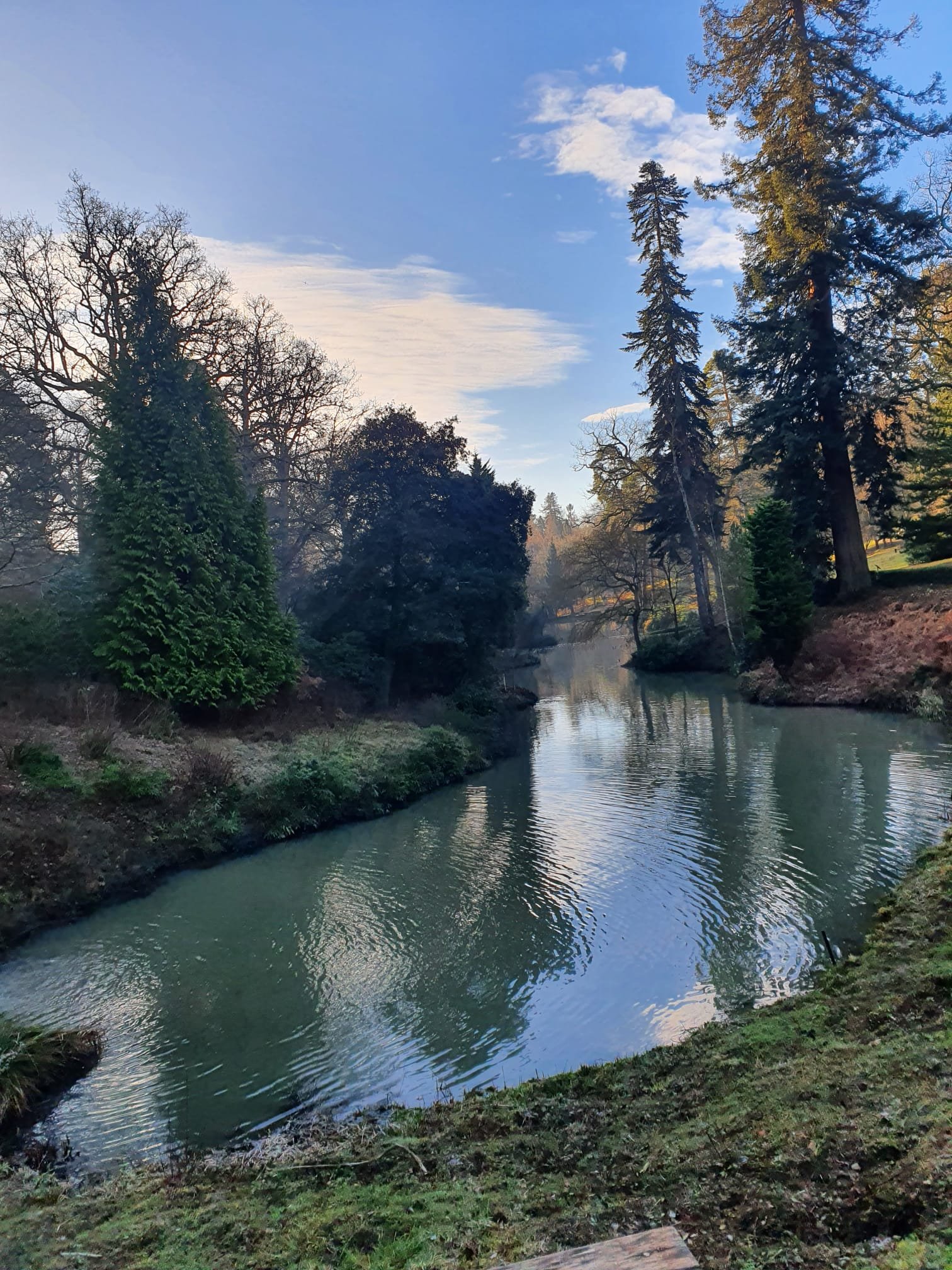
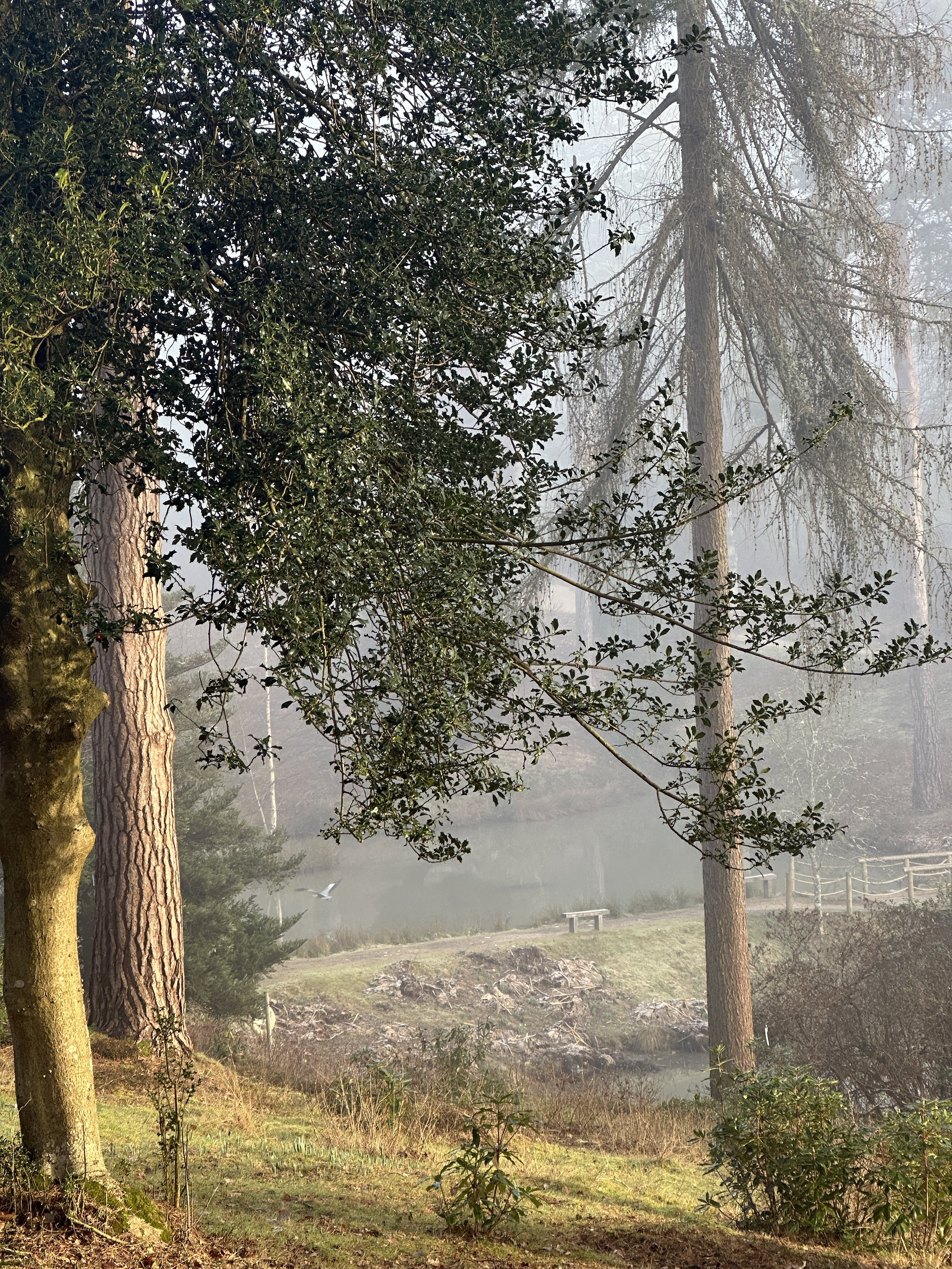
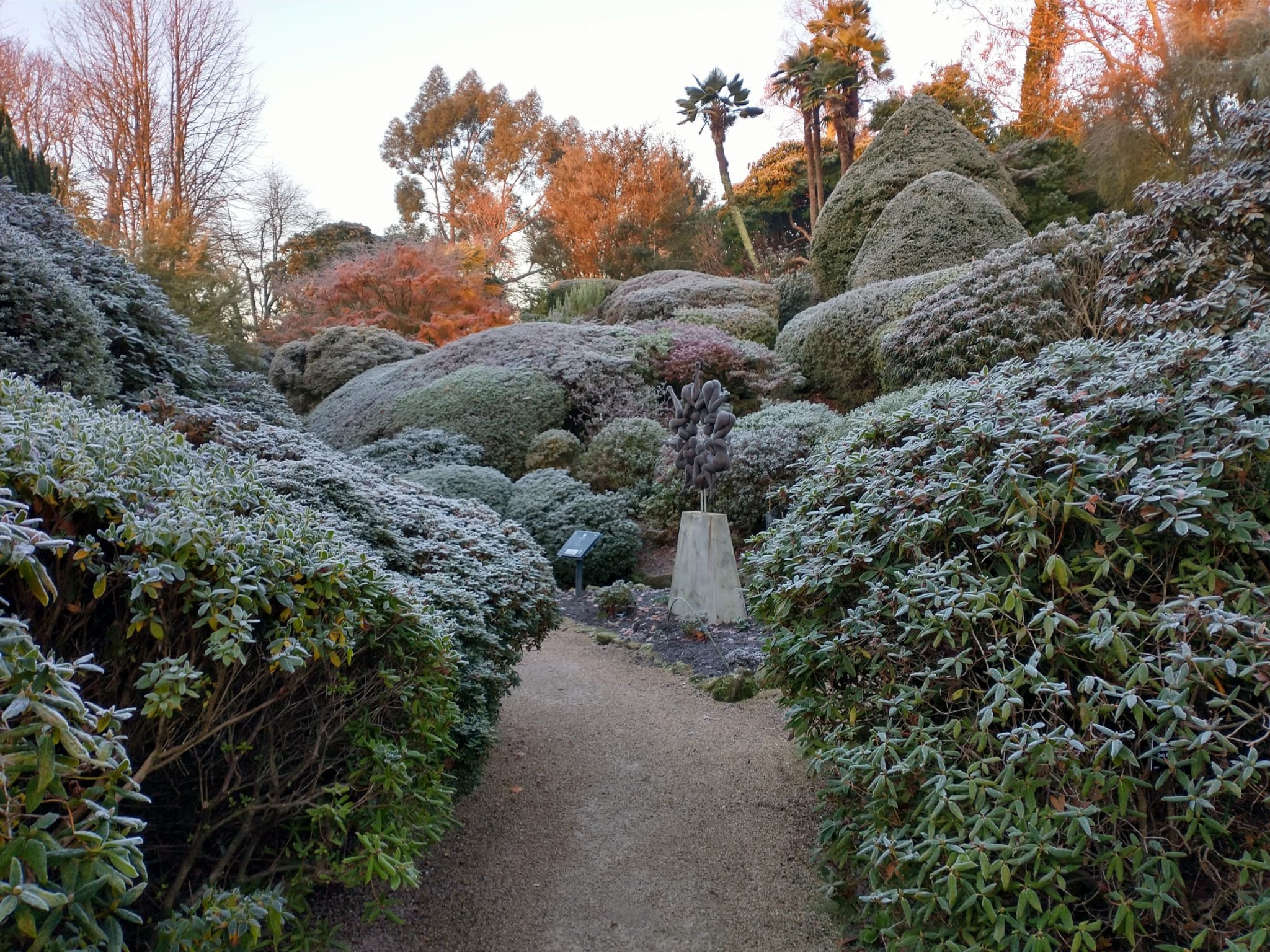
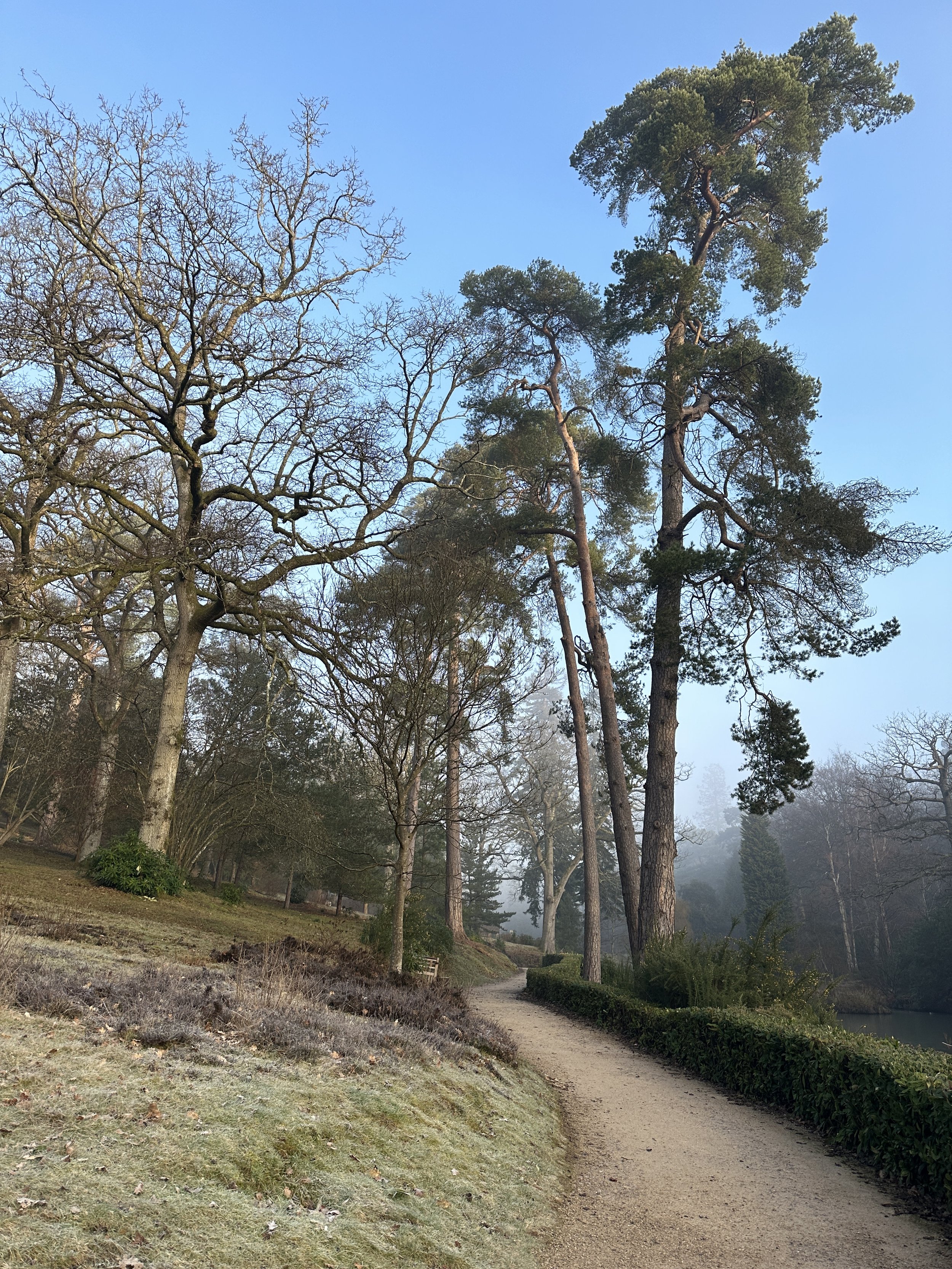
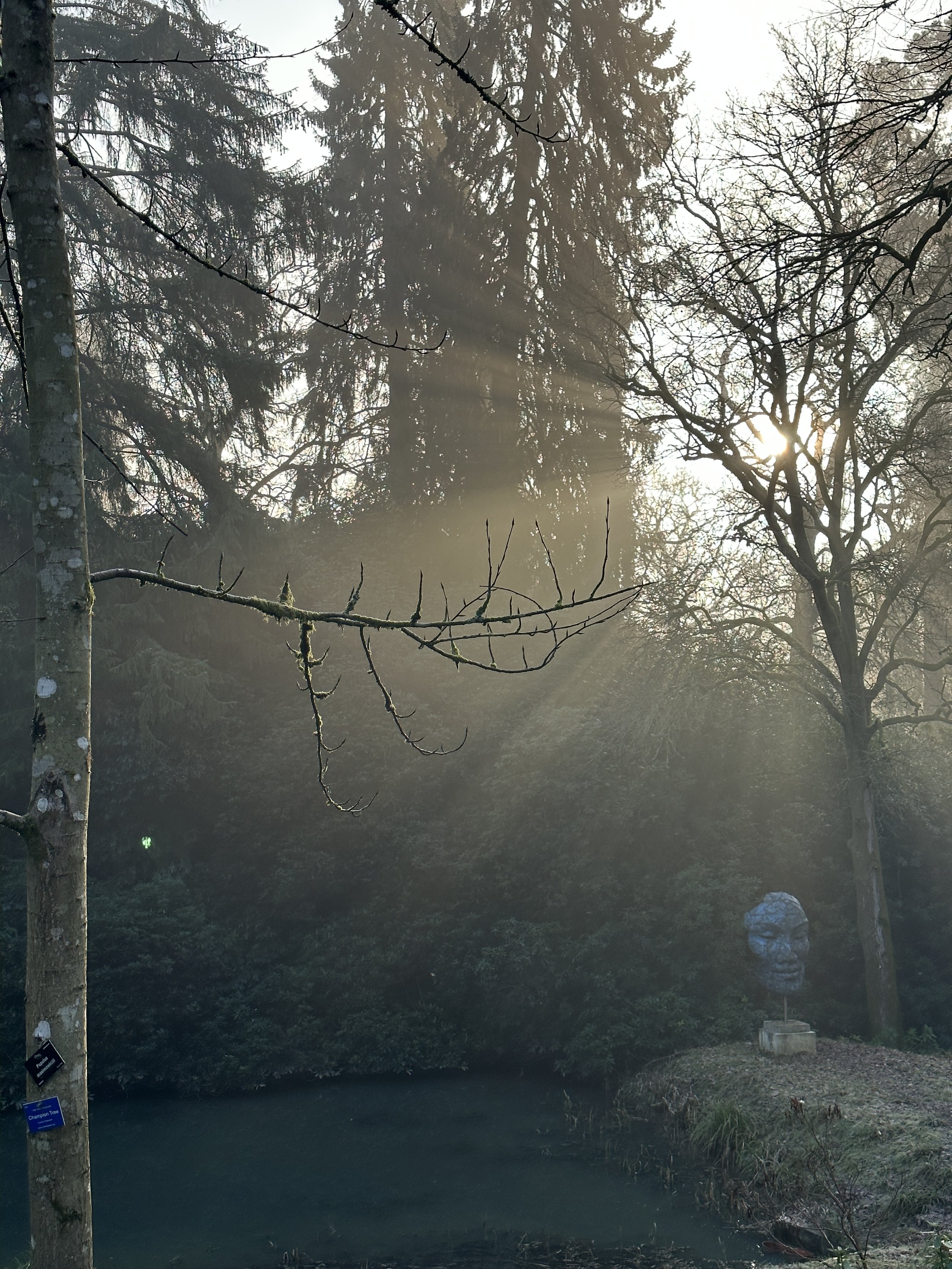
Sir Edmund’s Great Grandson Robin Loder then re-planted the current version exactly 100 years later at the opposite end of the Leonardslee valley. Some of my favourite trees in the Leonardslee Pinetum include Cryptomeria japonica ‘Sekkan Sugi’ with its bronze winter foliage, Thujopsis dolobrata ‘Variegata’ with it multi-coloured flattened needles and the Black Spruce (Pinus mariana) which has stunning small purple cones. There are plenty of conifers that you could call ‘Christmas Trees’ in the Pinetum too, which all adds to the festive spirit here in the garden.
Gardening Team
The garden team will no doubt be wrapping up warm this winter while we’re working in the garden, but we’ll also make sure some of our more tender plants are well protected at this time of the year too. This might involve a good mulch with well-rotted organic matter over the top of underground Dahlia tubers in the Herbaceous Beds or around Canna crowns in the House borders for instance. The mulch will insulate the roots in the soil and stop them becoming waterlogged after heavy rainfall or snow-melt. Another method of winter protection is to wrap a plant in horticultural fleece. We’ll do this on the likes of our tree ferns (Dicksonia antarctica) in The Dell to stop them from suffering too much frost damage. Once wrapped, the crown can then be packed with straw as a real ‘belt and braces’ measure to prevent the ill effects of wet, icy weather. There are some plants that we have to bring indoors entirely. Our Abyssinian Banana plants (Ensete ventricosum ‘Maurelii’) from around the house for instance, will need this sort of protection. Last year we tried dry-storing them by removing all soil from the roots, cutting off all the fleshy foliage and then keeping them in a cardboard box in a dark corner, after first stroing them upside down to drain as much water from the stems as possible. Unfortunately, that wasn’t very successful, possibly down to the extreme extended below freezing temperatures we had last winter. Instead, this year we’ll still cut back most of the leaves but we’ll pot them up in barely moist compost and will store them in a dry corner of the glasshouse. This will allow us to see when the growing point emerges again in spring, ready for re-planting. Fingers crossed!
Other jobs for my team this month will include the huge annual leaf clearing job; continued planting of trees, shrubs and bulbs as long as the soil is workable; continued clearance and restoration of key areas etc as well as getting the seed and plant catalogues out and planning for next year’s displays. Elliot from my team will also be leading a Leonardslee Garden Walks at 11 am on December 20th for anyone who fancies learning more about some of our fantastic specimens. Our garden volunteers also run general garden tours at 10.30am on the first Monday (so the 4th in December) and third Wednesday (the 21st this time) of every month so make sure you book onto one of those if you’re interested to learn more about the history of the garden.
As you can see, there is plenty for you to see and plenty for us to be doing in the garden during December. I hope you all enjoy the Leonardslee Illuminated event this year and have a fantastic Christmas. Stay healthy and we look forward to seeing you here again in 2024 for another exciting year in the garden!
Jamie Harris
Head Gardener


